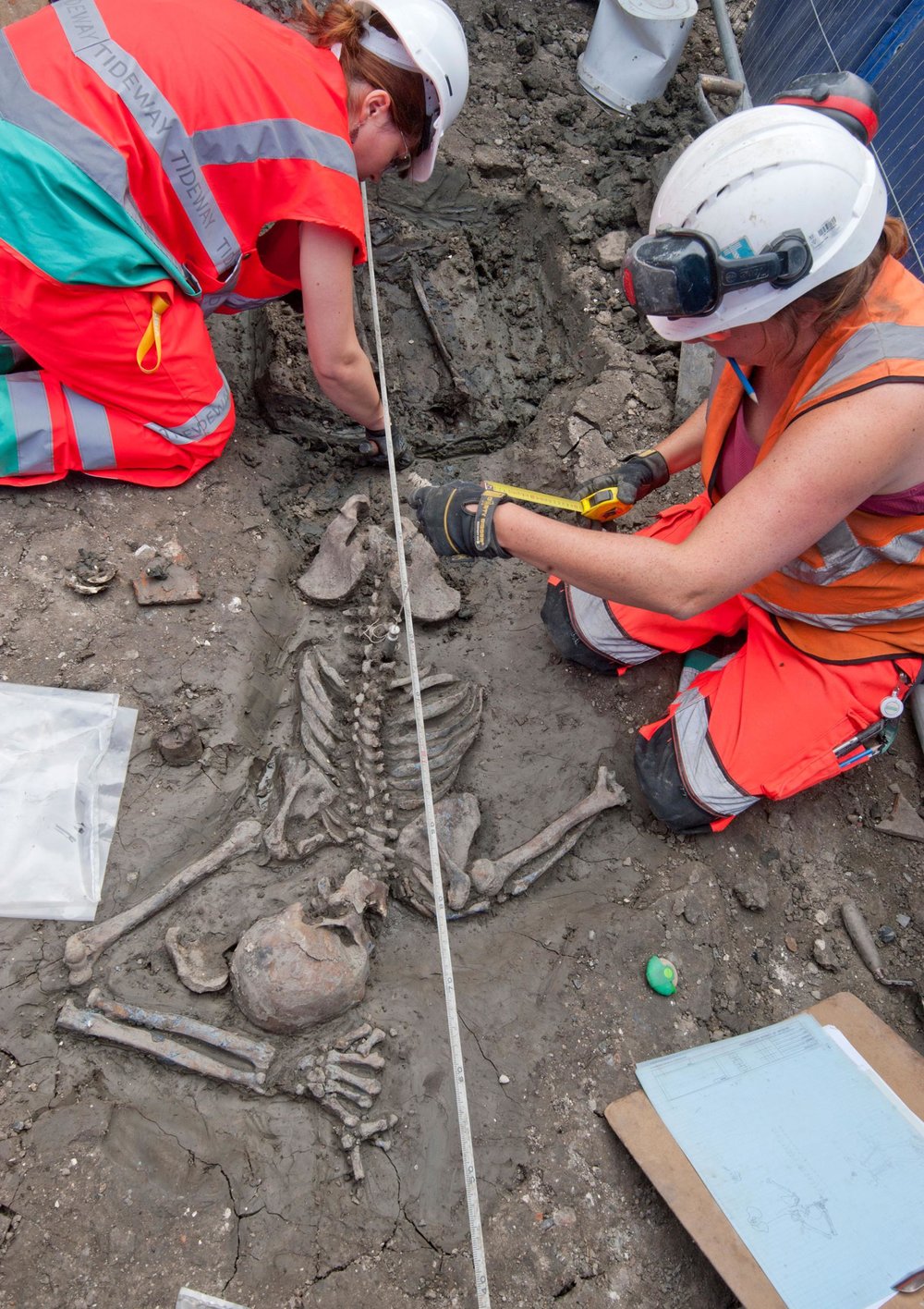
Archeologists Discover 500-year-old Skeleton Wearing Thigh-high Boots

A pair of high boots are a fashion staple in everyone’s winter wardrobe – but if you thought that these stylish shoes were only recently introduced to the world of fashion, you’ll be surprised to know that they’ve actually been around for many centuries!
A Shocking Discovery
While many can’t even imagine being buried in such a bold fashion statement, a 500-year-old male skeleton was found in the mud of Thames River in London, England, rocking nothing but a pair of thigh-high boots.
The skeleton of a man, around 35 years old when he presumably drowned or fell in the river during Medieval ages, was unearthed by archeologists during a shaft construction at Chambers Wharf. The discovery was made on the banks of Thames River, during the construction of Thames Tideway Tunnel in order to prevent sewer pollution.
Jack Russel, lead archaeologist for Tideway, said that this discovery had led them to new evidence which can help them understand how River Thames has been connected with London in the past. He also said that while London works to clean the river, it is also important to learn from the mementos being exhumed, like this man in his thigh-high boots.
Thigh-high Leather Boots
One of the theories about the mystery man’s unfortunate demise suggests that he was unintentionally buried and could have died while doing his routine. Archaeologists found it face down with an arm above his head and the other arm bent to itself on the side which further proves his accidental death.
However, many people wondered as to what purpose the boots could have been serving when he was alive. Some argued that the man could have been a fisherman or a sailor who had drowned, or someone who fell as he was climbing the Bermondsey Wall—one of the historical landmarks close to the excavation site.
The boots, which were in excellent condition, dated to the late 15th or early 16th century. They were possibly made from leather—an expensive and reusable material during those times, meaning it is deemed impractical to be buried in such expensive shoes when it could still be worn by others. The boots were also able to reach till thighs when stretched and were completely waterproof, which meant the man could have made a living on the river, hence, his presumed occupation, a sailor, a mudlark, or a fisherman.
Conservators also noted that additional soles were fitted inside the boots along with other substances like moss, which may have made it comfortable to wear and could have made it last more than a lifetime, pun intended.

The boots were in excellent condition and was made from leather. When stretched, the boots could reach the thighs and are also waterproof
Final Resting Place
No other injury was found on the skeleton at the time of his death, but many other details gave clues about how he lived his life. For instance, the skeleton had grooves on his teeth, which could be caused by biting ropes, strengthening the conclusion that he may have been a fisherman or someone who had lived his life on the river.
Though only around 35 years old at the time of his demise, quite untimely especially in the present times, the skeleton provided evidence that the fashion-forward man had lived a tough life. The wear and tear of his skeleton proved that he suffered from unimaginable pain caused by osteoarthritis, which was worsen by his daily routine and lifestyle. The man indeed died in the boots as he fought for survival 500 years ago.
The skeleton was found face down, meaning the man could have fallen or drowned in the river before his untimely demise
Thames River and London
According to Niamh Carty, a human osteologist at MOLA Headland, a human skeleton can provide osteo-biographic insights on a person’s life. The boot man’s teeth and skeleton have provided with information about his childhood and the hardships he had suffered in his struggle for survival. The skeleton can also show how his job had greatly affected his body and what he would have looked like.
One question scientists and archaeologists may have failed to answer is how the skeleton ended up in the banks of the Thames River. Though theories from the human skeleton could be deducted, we would never be sure if it is true.
But lessons that have been learned from the boots-wearing man, aside from falling into the trap that is the risky fashion, are the connection between London and the Thames River and how life has improved since then.
More in History Mystery
-
`
Craziest Pokémon Toys Ever Created – Which Ones Do You Remember?
Growing up, everyone loved the Pokémon franchise. After all it is one of the oldest and most popular monster series to...
October 16, 2024 -
`
Remember The Other Member of Destiny’s Child? LeToya Luckett Went Through a Lot after Being Ousted
Destiny’s Child was the bomb – since the all-girl group came into the public’s consciousness, the members’ careers climbed to unimaginable...
October 16, 2024 -
`
The True Story Of Pocahontas: Historical Myths Versus Sad Reality
John Rolfe was a respected planter who played an important role in the survival of American colony – first Eglish Permanent Colony. But...
October 16, 2024 -
`
5 of The Most Fascinating Discoveries Made in 21st Century
2018 is filled with fascinating discoveries that became headliners because they shed light on some of the hidden secrets of our...
October 15, 2024 -
`
Best Superhero Games of All Times – Which One is Your Favorite?
You don’t need a cape to become a superhero, all you need is a gaming controller. Humans have always been fond...
October 15, 2024 -
`
Mind-Blowing Facts About Your Favorite Movies that You Probably Didn’t Know
Almost everyone loves watching movies, it is the one form of entertainment that will never get old. The film industry has...
October 15, 2024 -
`
The Most Mysterious and Controversial Celebrity Deaths
Being famous does have a lot of perks, celebrities earn tons of money especially if they choose to be involved in...
October 15, 2024 -
`
Top ’80s Classic Video Games You Totally Miss
One of the best ways to entertain yourself is playing video games since advanced technology took over the world. These addictive...
October 15, 2024 -
`
Another David Bowie Boxed Compilation Is Coming Out This Year
There are so many iconic musicians the world has seen over the past couple of decades. Some of them have unfortunately...
October 15, 2024










You must be logged in to post a comment Login